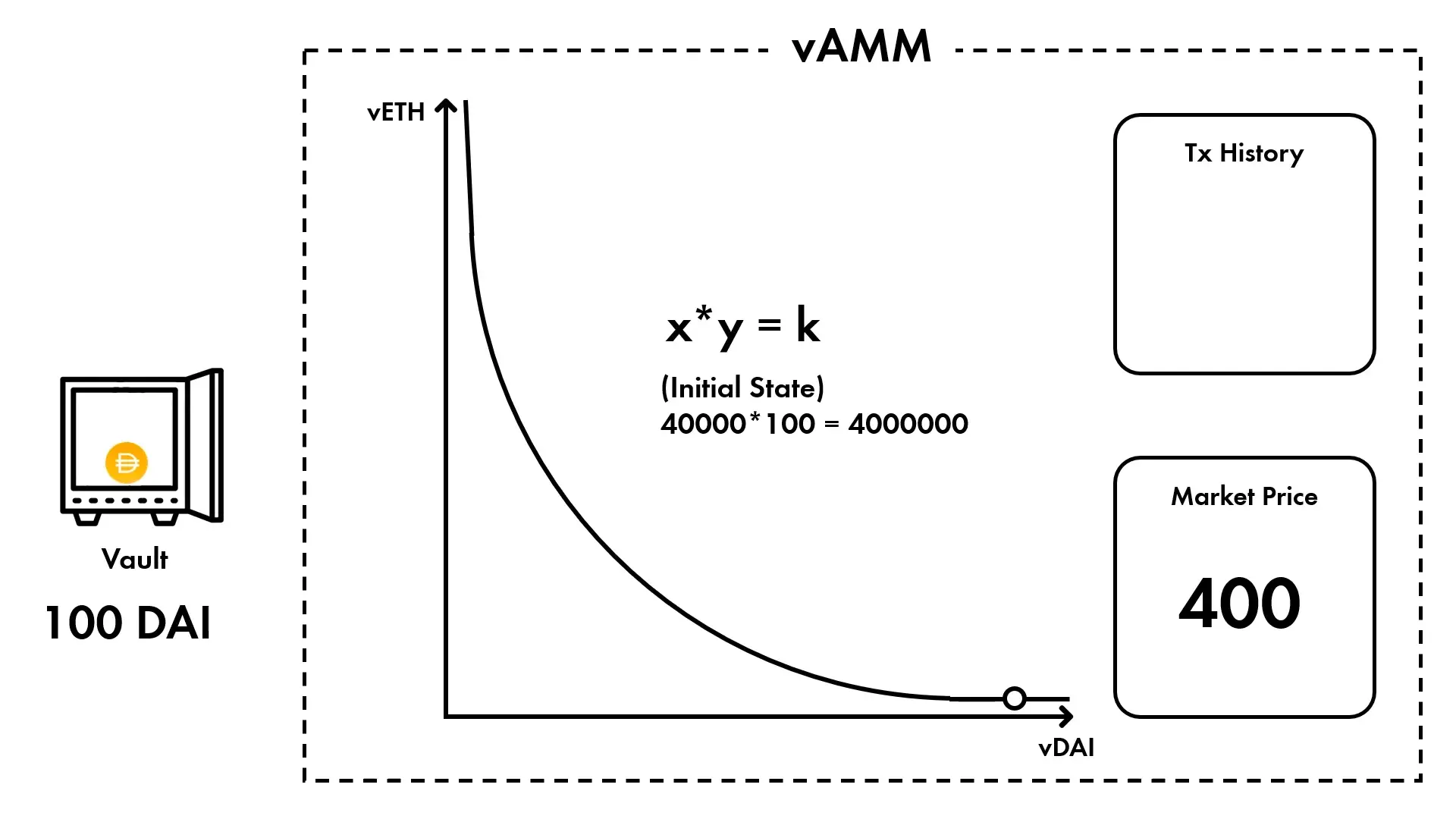
Perpetual Contract Decentralized Exchanges (DEXs) are an emerging type of trading platform that have gained popularity in recent years due to their decentralized nature, high liquidity, low costs, and the innovative use of liquidity pools. These platforms, which can adopt an order book model and support leveraged perpetual contract trading, are becoming increasingly favored by investors and traders alike.
For companies or teams aspiring to launch a perpetual contract DEX, it's crucial to understand various aspects of these platforms, including technical architecture, liquidity, risk management, and user experience. This article offers a detailed guide to help you build a top-tier perpetual contract DEX.
Understanding Perpetual Contract DEX
To grasp the concept of perpetual contract DEXs, familiarizing yourself with related technical terminologies and the relationship between perpetual contracts is essential.
-
Decentralization: Operates on the blockchain, utilizing a distributed computer network. Smart contracts are the core of a perpetual contract DEX, executing operations and transactions automatically based on programming and user inputs.
-
Non-custodial: Users retain ownership of their crypto assets while trading on a perpetual contract DEX, eliminating the need to entrust control to a centralized custodian.
-
Permissionless: Like most Web3 dApps, access to perpetual contract DEXs requires no permission. Anyone with a Web3 wallet can easily connect, without KYC procedures or cumbersome processes.
-
Liquidity Pools: Trading liquidity originates from liquidity pools. Individuals, groups, and institutions contribute liquidity to these DEXs, which is pooled on the blockchain and controlled by specific smart contracts.
-
Order Book Trading: Combines decentralized features with the familiarity and practicality of order book trading models and interfaces.
-
Leveraged Perpetual Contracts: Allow traders to bet on the price movements of underlying real assets. Traders can enter long or short positions and maintain open positions indefinitely. Leverage is typically available from 2x to 100x.
Why Perpetual Contract DEX is Important
If Bitcoin represents the democratization of currency, then perpetual contract DEX represents the democratization of exchanges. Here are key reasons for its significance:
-
- Security: Being decentralized on the blockchain, it is not subject to centralized points of failure. Thus, risks associated with negligence, recklessness, or fraud by centralized participants are mitigated. Users feel safer and more trusting of the platform.
-
- Transparency and Accessibility: The code of smart contracts is available on the blockchain for review, making transactions visible and thus more transparent and accessible. With a VPN and Web3 wallet, anyone can access a perpetual contract DEX anonymously, without national interference.
-
- Opportunities for Regular Investors: DEX relies on many individuals and groups to provide funding, increasing the exchange's liquidity. Anyone can become a liquidity provider and earn from transaction fees. Before investing, investors can review DEX documentation, tokenomics, and code to better understand its mechanisms and risks.
Technical Architecture Types
The technical architecture of a perpetual contract DEX needs to handle high transaction volumes and low latency. Some popular solutions include:
-
- Order Book Matching: The order book model arranges all buy and sell orders by price and matches transactions based on supply and demand. This model is widely used in traditional financial markets and is becoming a mainstream choice for decentralized perpetual contract exchanges.

dYdX’s ETH USD order book, source: dYdX
However, as order book matching often occurs off-chain, it carries centralized risks; the model is technically complex, requiring strong capabilities for development and maintenance. Furthermore, it usually incurs transaction fees and market maker costs, potentially leading to higher trading costs.
Prominent decentralized perpetual futures exchanges adopting the order book model include dYdX and Injective.
-
Automated Market Maker (AMM): The AMM model is an algorithm-driven liquidity mechanism that doesn't rely on traditional market makers. It automatically calculates asset prices using mathematical formulas based on supply and demand. The most commonly used AMM model is the constant product formula: x * y = k, where x and y represent the shares of two assets in the liquidity pool, and k is a constant.

Source: mytokencap
In perpetual contract DEXs, the AMM model is used for virtual AMMs. Virtual AMMs don't involve actual spot transactions but are based on assumptions. Traders provide liquidity by depositing assets into the liquidity pool and receive transaction fees as rewards.
Perpetual Protocol, Drift Protocol, and SynFutures are three well-known decentralized perpetual contract exchanges based on the AMM model. They each have their unique features and services for traders.
-
Oracle Model: The oracle model uses external data sources (oracles) to provide price information, rather than relying on the DEX's AMM mechanism. This model can offer real market prices without the need for AMM price adjustments, so traders don't have to worry about slippage. Additionally, the oracle model doesn't require a large amount of liquidity funds or complex AMM algorithms, thus more effectively utilizing capital and reducing operational costs.

However, because oracles rely on external price data, there is a risk of hacking or manipulation, and low-liquidity assets may be difficult to list. Moreover, DEXs that depend on specific oracle data may not become market leaders in price discovery.
GMX is a decentralized perpetual contract exchange on the Arbitrum network that adopts the oracle model. By offering zero slippage trades and generous rewards to market makers, it attracts traders.
Deep Liquidity Pools
Liquidity is key for any exchange, including perpetual contract DEXs. It refers to the availability of buyers and sellers for a specific asset. A lack of sufficient liquidity can result in the inability to execute trades quickly and efficiently.
Perpetual contracts allow traders to speculate on the price of assets without settling each transaction. This continuous trading requires ample liquidity to facilitate frequent buying and selling. If liquidity is lacking, traders may face significant slippage, making it difficult to enter or exit the market at expected prices.
Therefore, perpetual contract DEXs can employ several key strategies to increase liquidity:
-
- Offer liquidity mining rewards, rebates, and other benefits, such as tokens or transaction fee reductions, to incentivize traders to contribute liquidity to the platform.
-
- Collaborate with market makers who can provide quotes and guarantee trades within a certain price range, attracting more users to trade on the DEX and improving liquidity.
-
- Establish deep order books to provide better price discovery and meet trading needs at different price levels.
-
- Adopt liquidity aggregation solutions that combine the liquidity of multiple DEXs, offering users greater liquidity and lower slippage.
-
- Provide a selection of perpetual contracts for major cryptocurrencies. By listing multiple contract options, it attracts more traders and increases trading opportunities.
-
- Charge low or no fees. Reducing transaction costs encourages higher trading volume and more liquidity.
-
- Cultivate an active trading community. By actively engaging with user groups through social media, online forums, and events, it creates an enthusiastic trading environment.
Risk Control and Management
Risk control is a critical component of operating a perpetual contract DEX. To ensure trading safety and user funds, a comprehensive risk control system and mechanisms must be established, including:
-
- Forced Liquidation: Forced liquidation refers to automatically closing a user's positions when their holding risk exceeds a predefined threshold, preventing further losses. It effectively prevents users from being liquidated and mitigates losses.
-
- Risk Management Parameters: Risk management parameters are essential components of the DEX's risk control system. Common parameters include initial margin rate, maintenance margin rate, maximum leverage ratio, liquidation price, and position adjustment factor. DEXs adjust these parameters based on market conditions and their risk tolerance. The parameter settings need to balance safety and risk-return, ensuring trading safety while meeting users' trading needs.
-
- Insurance Fund: The insurance fund is a pool of funds used by the DEX to compensate for users' liquidation losses. When users suffer liquidation losses due to market volatility, the insurance fund can provide partial compensation. The source of the insurance fund can be part of the DEX platform's revenue or established by user contributions.
User Experience (UX)
UX is one of the key factors determining the success of a perpetual contract DEX. A good user experience can attract more users, increase user activity, and trading volume. DEXs need to provide an easy-to-use, feature-rich, and secure platform to attract and retain users.
Key factors affecting the user experience of perpetual contract DEXs:
-
Usability: The DEX interface should be straightforward, allowing users to quickly get started; the trading process should be simple and efficient, reducing user steps; detailed functionality explanations and tutorials should be provided to help users understand the platform's features.
-
Feature-rich: The DEX should offer various trade types to meet different user needs; provide reasonable leverage ratio options to accommodate users with different risk preferences; offer risk management tools like stop-loss and take-profit to help users control risk.
-
Security: The DEX should take effective measures to protect user funds, such as cold wallet storage, multi-signature authentication, etc.; ensure contract security, strictly audit contract code to eliminate vulnerabilities and risks; DEXs should establish a comprehensive risk control system to reduce trading risks.
-
Other Factors: The DEX should provide sufficient liquidity, reducing trading slippage; set reasonable trading costs to attract user transactions; offer timely and effective customer support to help users resolve issues.
Building a premier perpetual contract DEX is a daunting task, but with careful planning and execution, you can create a successful DEX that offers an exceptional trading experience for your users.
We understand traders' needs for a secure, efficient, and innovative platform and the desire for strong, customizable technology from trading platforms. The ChainUp DEX solution emerges to meet these needs, helping you effortlessly establish a top-tier DEX that meets your own requirements and user expectations.
Leveraging leading technology and extensive experience, the ChainUp DEX solution empowers you with a turnkey solution that requires no extensive development time and resources; highly customizable to meet your unique needs; top-tier security architecture and risk control system to safeguard user funds and trading safety; high-performance matching engine to provide a smooth trading experience. With ChainUp, quickly launch your DEX, seize market opportunities, and lower operating costs while focusing on your core business.
Join us now, choose ChainUp's perpetual contract DEX solution, and become a market leader.
Contact us to learn more about our DEX solution.